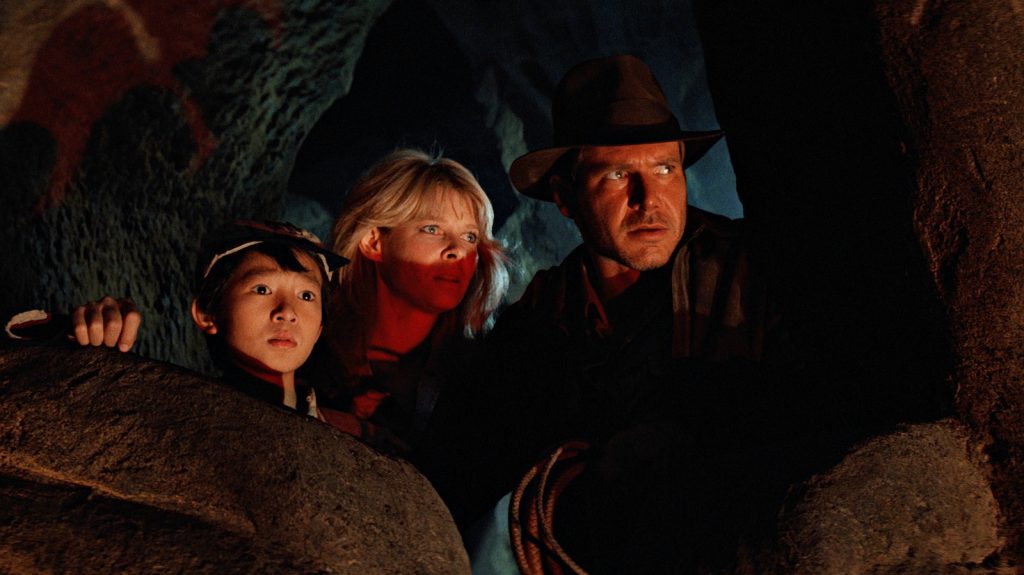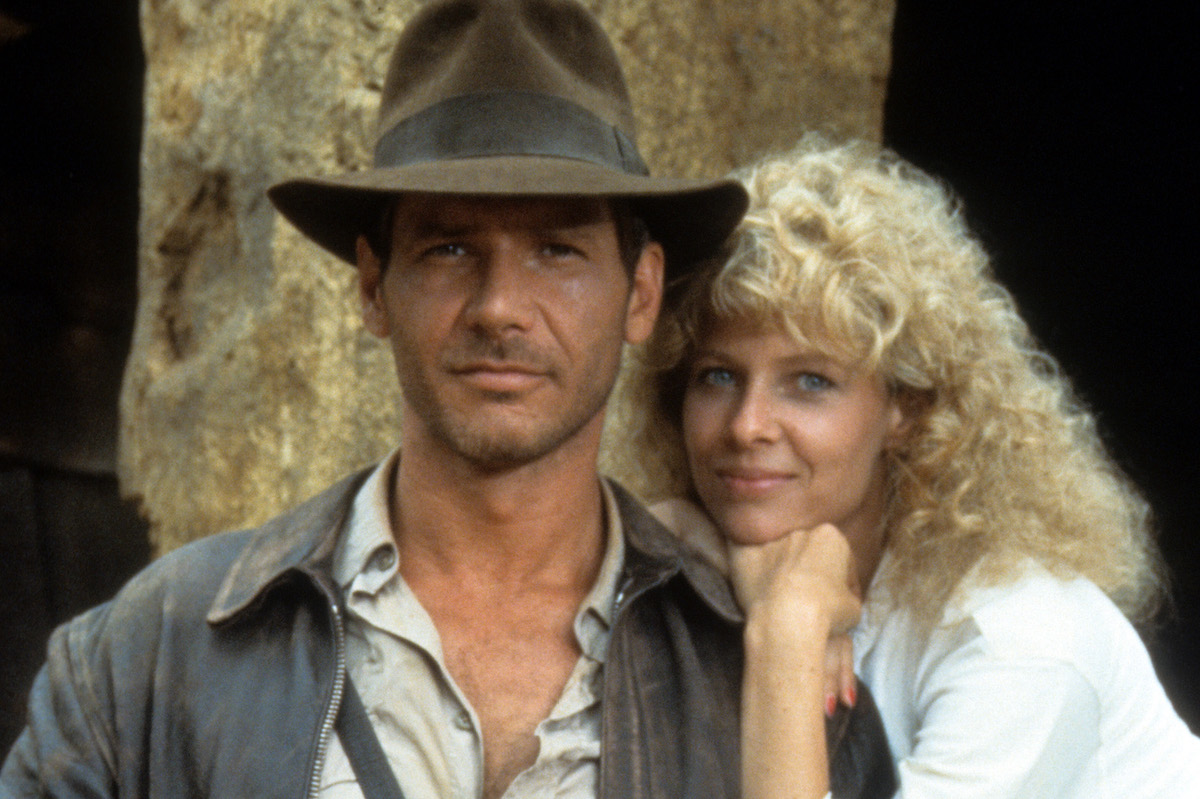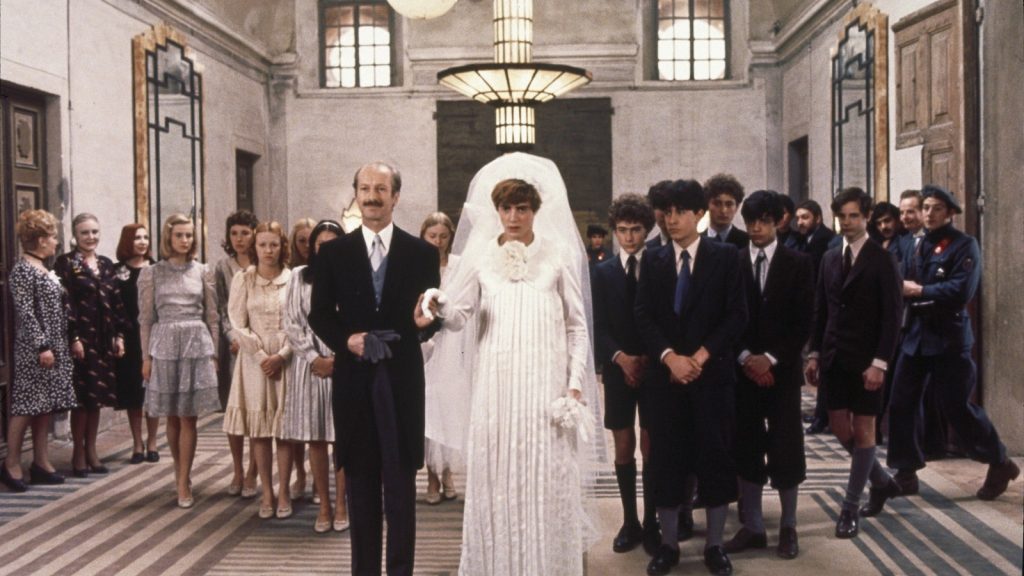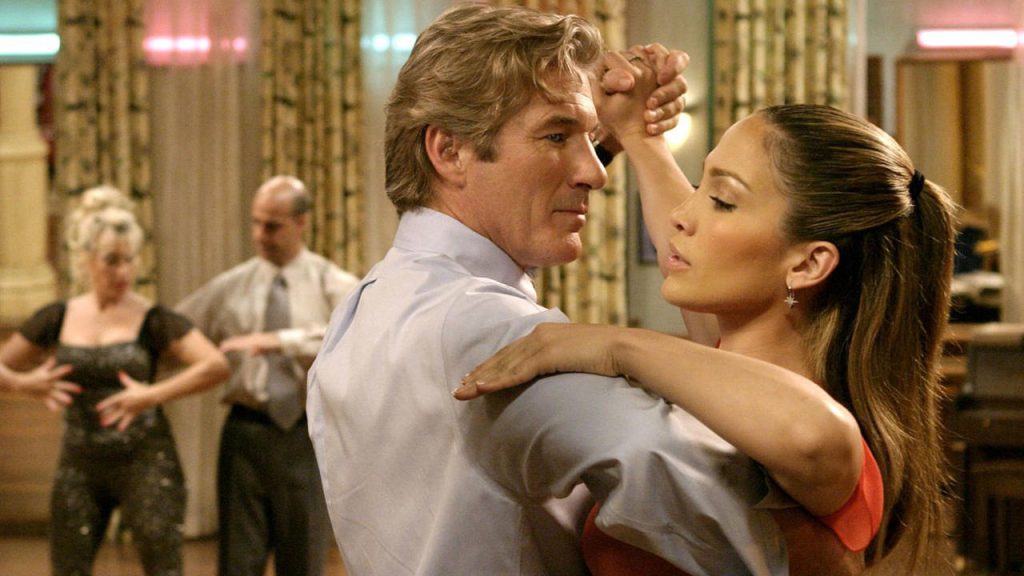For Valentine’s Day, we’re once again looking at the wide variety of onscreen relationships: movies about ill-fated couplings, toxic partners, and unconventional romances, to help offset the sticky-sweetness of the season. Follow along here.
“Part of it was I was going through a divorce,” George Lucas admitted to Empire Magazine in 2008. “Steven [Spielberg] had just broken up [with music industry exec Kathleen Carey] and we were not in a good mood… It ended up darker than we thought it would be. Once we got out of our bad moods, which went on for a year or two, we kind of looked at it and went ‘Mmmmm, we certainly took it to the extreme.’”
Disowned by its director, scorned by its leading lady, and so sickeningly violent it prompted the MPAA to create an entirely new rating, Indiana Jones and the Temple of Doom is the ugly stepchild of franchise blockbusters. It’s also the only interesting sequel (if technically a prequel) to Raiders of the Lost Ark, sending the world’s most dashing archeologist into an inferno of Freudian anxieties wrought by two geniuses who were sitting on top of the world professionally and personally miserable. The brokenhearted wonder boys took their heartache out on Indy – and the audience – conjuring the cinematic equivalent of a breakup record that ranks alongside Bob Dylan’s Blood on the Tracks and Bruce Springsteen’s Tunnel of Love. Temple of Doom is one of the wildest and most genuinely unhinged big-budget films of any era, and an amazing movie to watch when you’ve just been dumped.
George Lucas met his wife Marcia when they were both apprentice editors working under the legendary Verna Fields. One of the unsung heroes of New Hollywood, Marcia Lucas worked with Francis Ford Coppola on The Rain People, cut Alice Doesn’t Live Here Anymore, Taxi Driver and New York, New York for Martin Scorsese, and had helped out on her husband’s THX-1138 before taking over the editing of his American Graffiti (alongside Walter Murch) when Fields left the project to go work on What’s Up Doc? Marcia’s said to have saved Star Wars after original editor John Jympson couldn’t make heads or tails of the rough cut, and anecdotes abound about story suggestions she provided for her husband’s projects. It was Marcia’s idea that Obi-Wan Kenobi die by Darth Vader’s hand during their Death Star duel, and she’s the one who told Spielberg he needed to add a scene of Indy and Marion walking off together at the end of Raiders.
Geroge and Marcia privately split in 1982, but for publicity reasons he’d asked her to keep it quiet until after the following summer’s release of Return of the Jedi, on which Marcia had wound up dutifully riding to the rescue after the first two editors couldn’t crack it. Within a year, she remarried a stained glass artist she’d met at Skywalker Ranch and never edited a motion picture again. (Marcia Lucas largely goes unmentioned in discussions of these seminal films, so I’d love to see a historical reappraisal of her role in shaping them, a la Karina Longworth’s essential profile of Polly Platt on the You Must Remember This podcast.)
Embittered and bereft, George poured all his bad feelings into writing Temple of Doom. “Indiana Jones Goes to Hell,” he and Spielberg jokingly called it, bringing back the Thuggee Cult villains from their beloved Gunga Din in a plot revolving around kidnapped children forced into slave labor, with a sideline about human sacrifices in an underground lava pit. Hearing that his pal Spielberg was down in the dumps, Brian De Palma had recently invited him to Miami to help come up with cool ways to whack people while he was shooting Scarface’s bullet-ridden finale. This must have been awfully therapeutic for the depressed director, because Temple of Doom contains some of cinema’s most ingeniously grisly killings, like a man impaled on a skewer of pigeons flambe or that guy who gets ground into a red stain by a conveyor belt rock crusher. Spielberg has famously sworn that “there’s not an ounce of my personal feeling in Temple of Doom,” but I don’t believe him for a second.

It’s one of his most exuberantly directed movies, at times exhaustingly so. The film is a non-stop barrage of creepy-crawly bugs and bats and eyeball soup and chilled monkey brains, all unleashed –like some of the movie’s more regrettably retrograde ethnic stereotypes– with a naughty child’s delight in the inappropriate. During the dazzling opening sequence, Kate Capshaw blocks our view of the title card while she sings Cole Porter in Mandarin, before chorus dancers at Shanghai’s Club Obi-Wan (tee-hee) unfurl into a Busby Berkley musical kick line in brazen defiance of the established physical space. (How big is that nightclub? And where did the patrons go?) Lucas and Spielberg are constantly, almost arrogantly disregarding physics and logic. It’s the kind of movie in which characters can jump out of an airplane and sled down a snowy mountain on an inflatable rubber raft, with Spielberg cannily understanding that we’ll only buy such a ridiculous stunt if he pulls it off all in one shot. Critics like to compare pictures like these to roller coaster rides, so this film literally becomes one during a mine cart chase that plays like a miniature version of Buster Keaton’s The General cranked up to quadruple time. Despite the precision of the filmmaking technique, one never gets a sense during Temple of Doom that Lucas and Spielberg are entirely in control of their material. The film feels more reckless than Raiders. Dangerous, even. Anything goes.
Set a year before the events of the previous picture, Temple of Doom’s incarnation of Indy is a proudly mercenary rake, only interested in his own “fortune and glory.” He may be saddled with a cute kid sidekick – the irresistible Ke Huy Quan – but Jones still cheats when the two of them play cards. (One of my many problems with the later sequels is that Indy started off as the kind of sketchy dude who got in trouble for seducing his mentor’s underage daughter, only to be retconned into a literal boy scout who even as a teenager made pious speeches about the importance of museums. Back before Lucas stupidly retitled the first film for home video, Indiana Jones was one of the Raiders.) Harrison Ford’s always best when allowed to be a bit of a scoundrel, and it’s a miracle what a witty performance he delivers here, given that the actor spent most of the shoot in agony from a slipped disc in his back and had to fly home for emergency surgery during the production. More bad vibes that undoubtedly added to the movie’s unholy hoodoo.
Temple of Doom’s scariest and most psychologically telling scenes take place within the titular structure itself, where an infamous moment finds a man’s still-beating heart ripped out of his chest by Om Puri’s high priest Mola Ram. (It’s the kind of scene you write when your ex-wife marries one of your former employees.) Viewed through that lens, the whole movie is basically about a custody battle, with a village’s children stolen and starving in service to an evil goddess. Jones briefly turns evil after being force-fed the black blood of Kali – playing out a pulp version of the domestic discord that drives so many Spielberg stories: Dad drinks and turns mean, hurting mom (Capshaw) and smacking around their surrogate son (Quan) before the nuclear family unit is ultimately restored, like it is at the end of every Spielberg picture.
Later Indiana Jones movies are more overtly family reunions, with an increased comedy quotient at the expense of any sense that these people are in danger. Temple of Doom stands out not just for its malevolence, but also from a plot perspective because it’s the only one that’s not a rehash of Raiders. Yet the film remains unloved even by many of the participants. When the first three movies were released in a box set on DVD, Capshaw kidded “Thank goodness it’s a three-pack, or we wouldn’t have made the cut.” Her performance as a human air raid siren is one of the film’s shrillest components, but we know at least one person was a fan. She and Spielberg married in 1989 and remain together to this day. A real-life happy ending to an otherwise fascinatingly unhappy movie.
“Indiana Jones and the Temple of Doom” is streaming on Disney+ (haha), Paramount+, and several other platforms.



